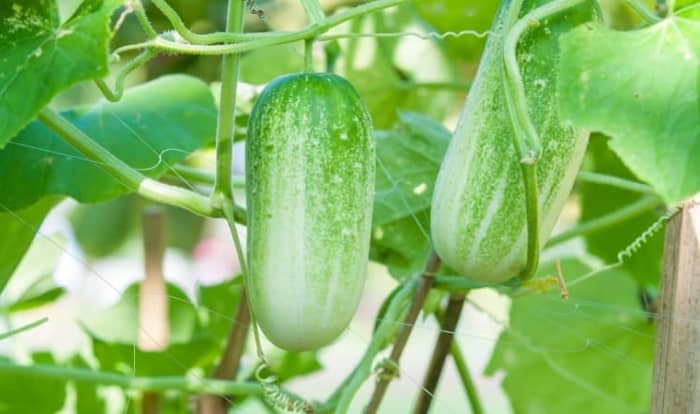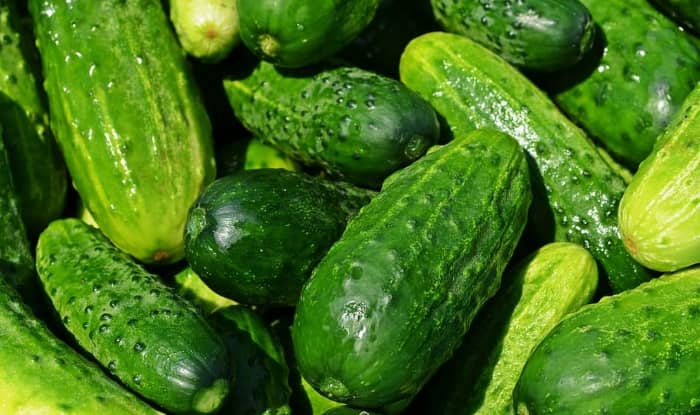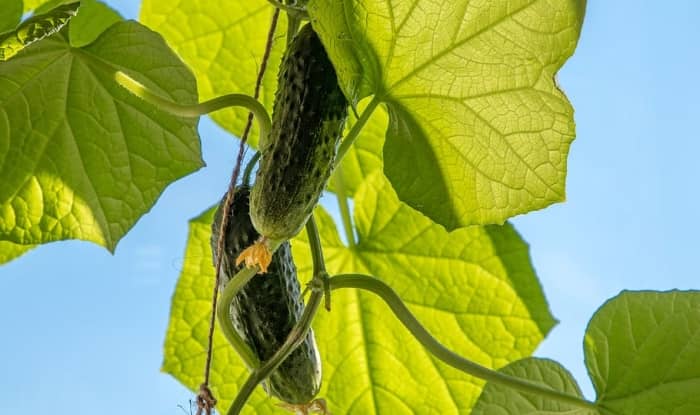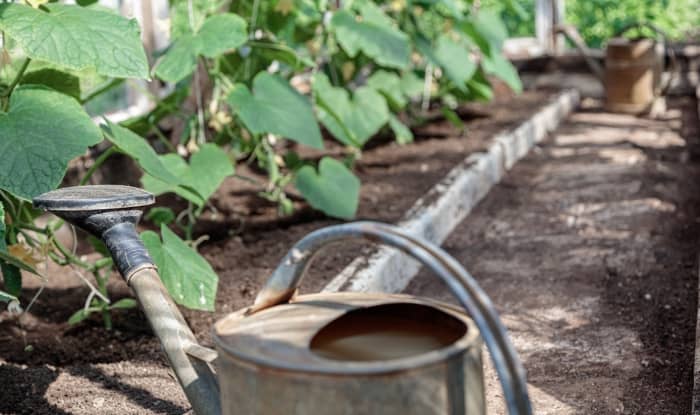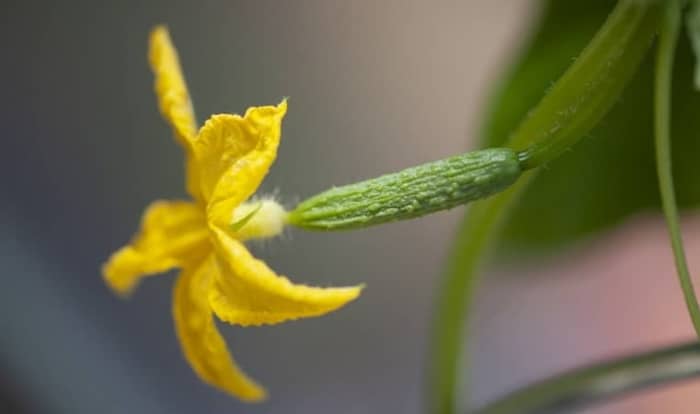Sometimes, cucumbers don’t end up growing the way you expect them to.
There’s a number of reasons for it.
Heat, sunlight, lack of water, insufficient nutrition, problems with pollination, and disease, affect their growth.
And even when there aren’t any cucumber plant development issues, different varieties grow in different sizes and shapes.
So in this article, we’ll take a look at the main things that make your cucumbers short and stubby.
And where possible, I’ll tell you what you can do to improve your results.
Why Are My Cucumbers Short And Stubby?
The Type Of Cucumber
The type of cucumber plant you’re growing has a big effect on the size and shape of the fruit.
You see, different cucumber varieties have a different size and shape.
Slicers grow to about 8 inches in length with a 2-inch diameter. They’re the long and slender cucumbers that are popular in your local grocery store.
But other varieties grow to be short, stubby, and fat cucumbers. These are often used as pickling cucumbers and have a length of around 5-6 inches.
There are even varieties that produce round cucumbers.
Nutrients
Cucumber plants are heavy feeders as they grow. And a lack of essential nutrients can result in short and stubby cucumbers.
If you’re growing in rich soil then you might not need to add some nutrients in the form of NPK at first. Adding compost and organic mulch to the soil a few weeks before planting can help to give it the nutrients it needs.
But if your cucumbers aren’t growing properly, and are showing other nutrient-deficient signs such as yellowing fruit and leaves, then consider feeding them with a good fertilizer.
Cucumbers need phosphorus, potassium, and nitrogen, to grow to their full potential. So aim for a fertilizer with NPK values of something like 5-5-10.
Growing Environment
Where you grow cucumber plants is also important. They are best suited to growing in light, well-drained soil, with exposure to plenty of sunshine.
Lack of sunlight, and temperatures below 50°F, will affect their growth.
Keep in mind that temperatures over 95°F can also have a negative effect. With consistently high temperatures, fruit size, quality, and yield are affected due to poor pollination.
Overcrowding can also cause growing problems. Cucumber plants need enough space to spread out and receive proper air circulation. Overcrowding results in resource competition, causing the fruit to be smaller and misshapen, sometimes the cucumbers are short and fat.
Make sure you provide adequate spacing when planting.
Overwatering Or Underwatering Cucumbers
Improper watering practices can negatively affect the growth of cucumber plants.
Overwatering can lead to issues such as oxygen deprivation in the roots, root rot, and fungal diseases that cause root problems and affect nutrient uptake.
Additionally, excessive water can flush away essential nutrients from the soil, causing nutrient deficiencies. Inadequate uptake of nutrients can result in smaller cucumbers.
On the other hand, underwatering can also hinder cucumber growth. It can lead to stunted growth by affecting essential processes like photosynthesis and nutrient uptake.
A lack of water results in small, shriveled cucumbers that taste bitter. In addition, inadequate water supply affects flower production and pollination, reducing cucumber yield.
The most obvious symptom of a lack of water is the plant starting to wilt in the sunlight.
Aim to water 1-2 times per week. Check the top inch of soil with your finger. If it’s dry it’s time to water them again. Cucumbers need around 1-2 inches of water per week.
Soak the area around the base of the plant, providing enough water to saturate the top 8 inches of soil where most of the roots are.
For optimal growth, maintain proper watering practices. The soil should be consistently moist but not waterlogged.
Provide adequate drainage, using mulch to retain moisture, and water deeply but infrequently to maintain the ideal soil moisture balance for healthy cucumber growth.
Pollination Problems
Pollination problems are a major cause of poorly developed cucumbers.
If the female flower is inadequately pollinated the cucumber fruit often ends up stunted or lopsided in its growth.
Most varieties of cucumber plants are self-pollinating and grow male and female flowers on the same plant. But they do require pollinators to transfer the pollen.
So this problem is sometimes caused by a lack of pollinators in your garden, such as bees, hummingbirds, butterflies, and moths.
The things you do in your garden can increase or decrease their presence.
In particular, you should be careful about using pesticides around your cucumbers and other flowering plants. They often kill bees and other pollinating insects.
Instead, you can use more environmentally-friendly methods such as row covers, hand-picking, and trapping to remove pests.
To encourage pollinators into your garden, try planting pollen and nectar-rich plants. With a variety of plants and flowers that bloom throughout the cucumber growing season, you can help to attract pollinators at the right time.
If you’re having problems with cucumber growth, check they’ve been pollinated successfully.
Or you can pollinate your cucumber plants yourself by hand to make sure the job is done properly.
Diseases & Pests
Plants suffering from disease will often produce stunted and deformed cucumbers.
Viruses that are well-known for having this effect include cucumber mosaic virus and aster yellows.
These are transmitted to your plants by insect pests such as cucumber beetles, leafhoppers, and aphids, while they feed on the leaves.
It’s difficult to cure plants once these diseases take hold, so the best method to deal with them is prevention.
Hand-picking insects and hosing them from the vines can work as long as there are not too many. To keep them away, try applying horticultural soap or neem oil.
Some diseases that affect cucumber plants are transmitted through water or the soil. So it’s a good idea to use a trellis or vertical support to keep the cukes off the ground as they grow.
